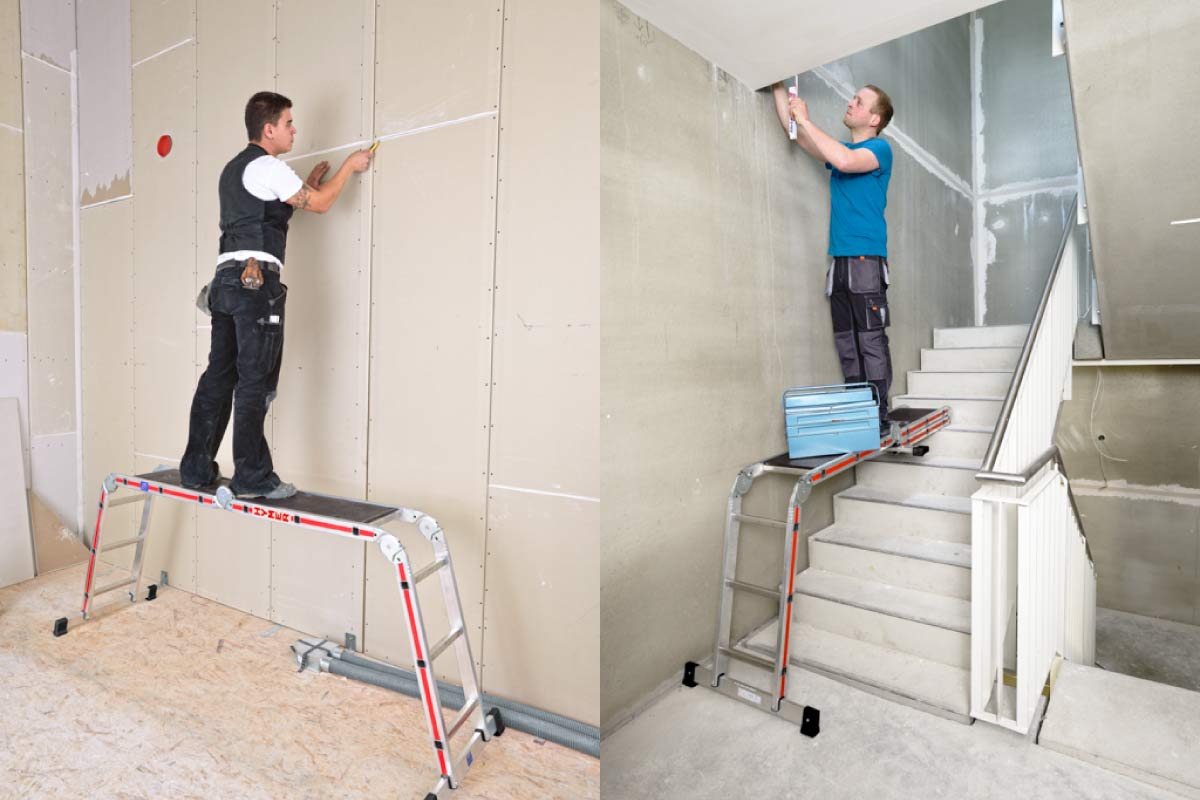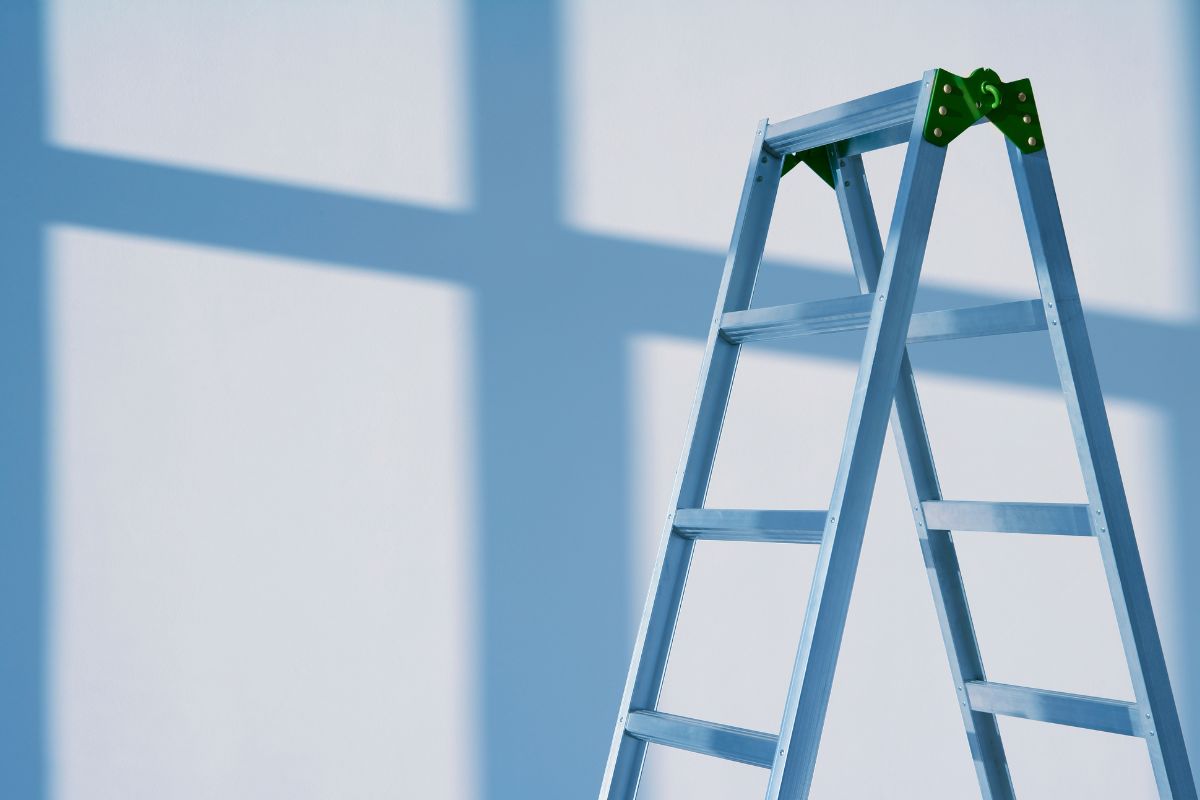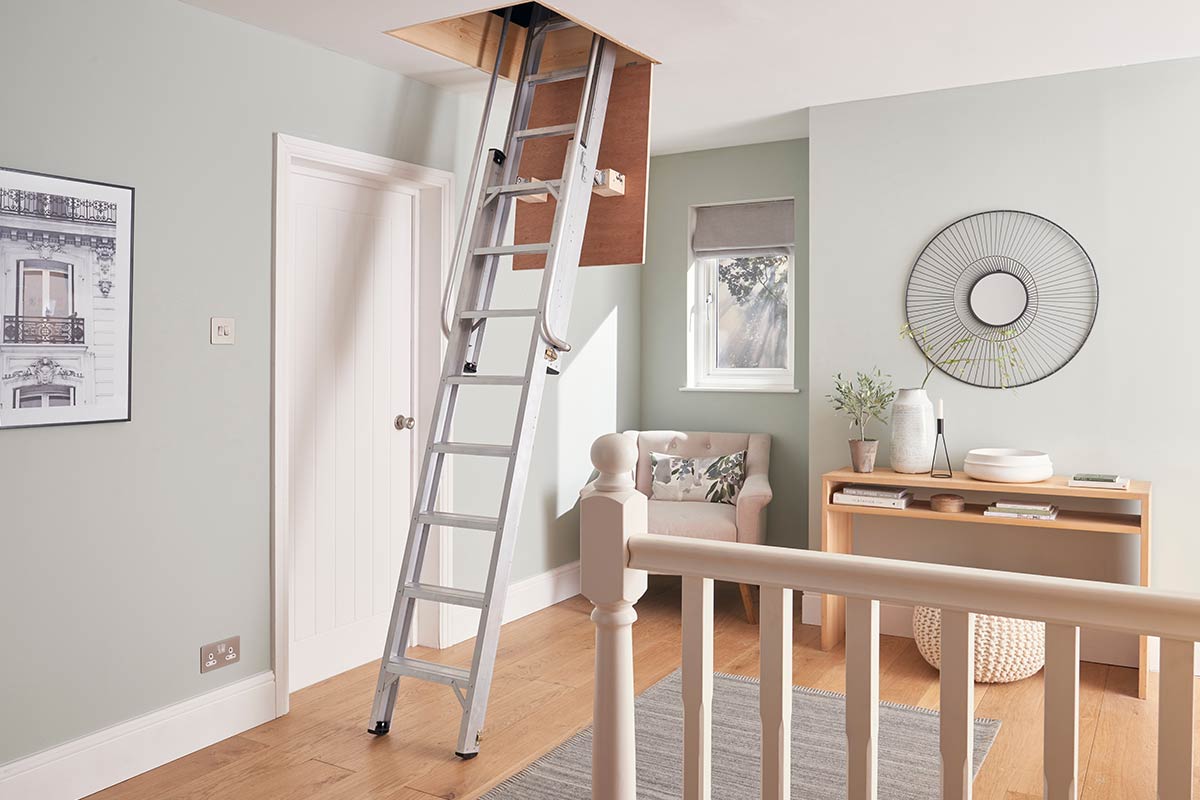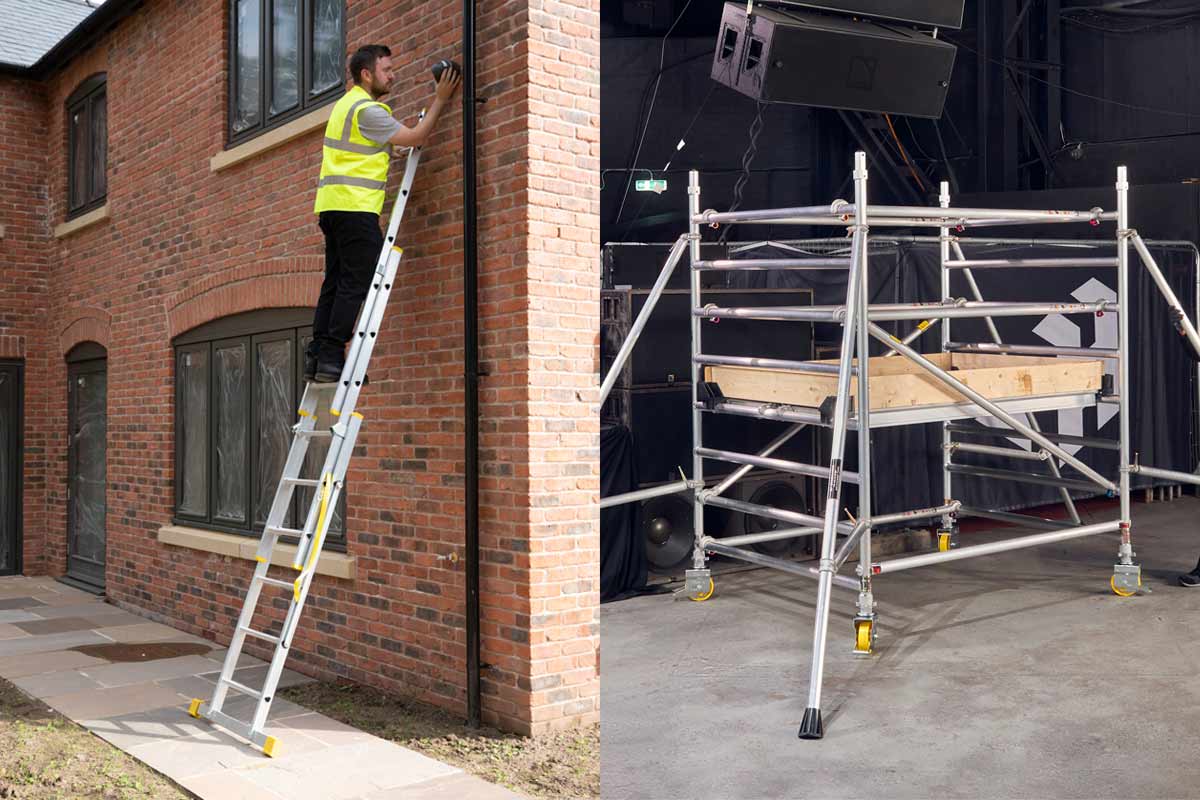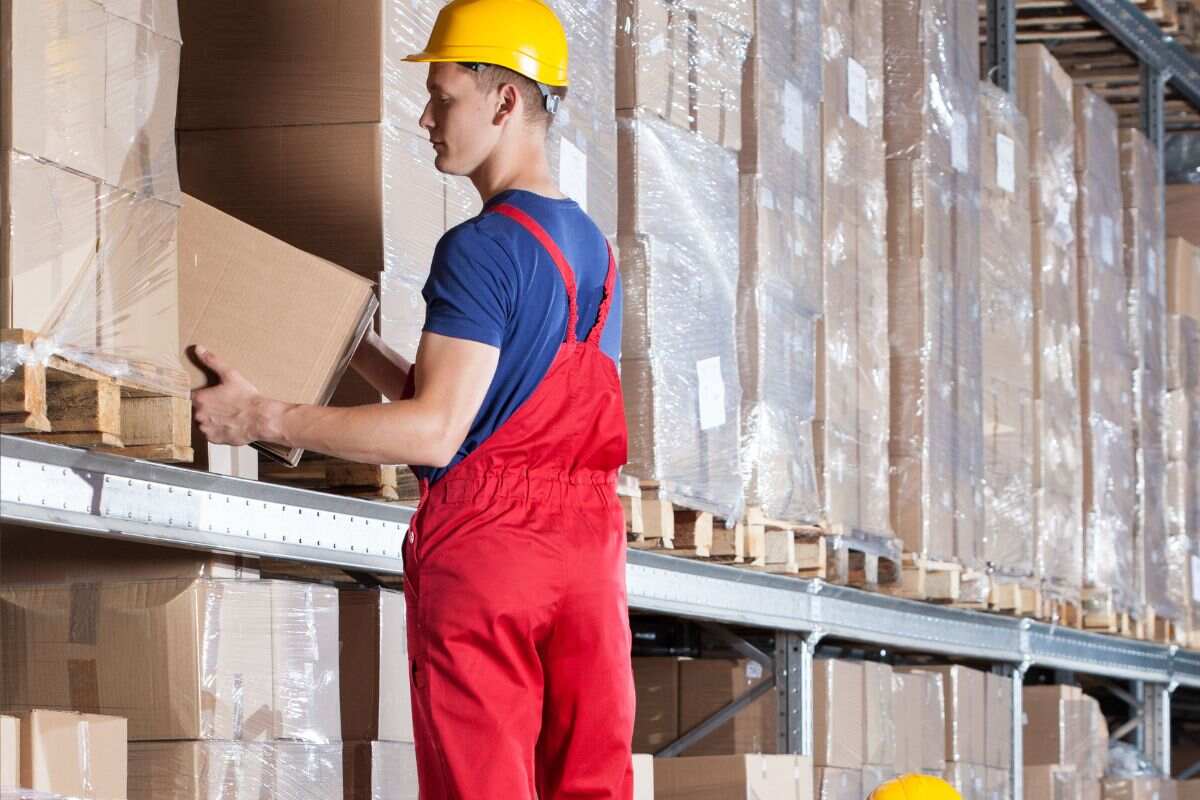The Complete Guide to Podium Steps
January 27, 2025 | Nate Cord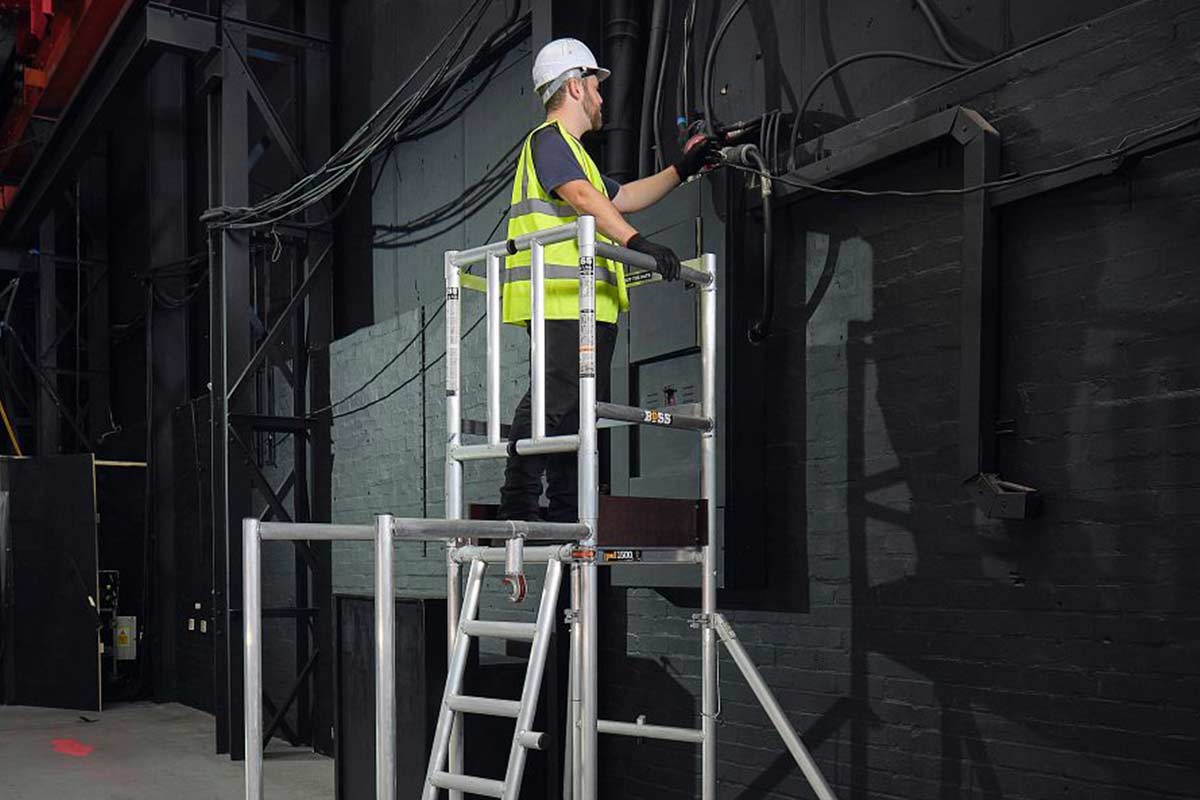
In this guide, our experts will explain what podium steps are, how they differ from step ladders, their relevant safety regulations, and how and when it is best to use one.
What Are Podium Steps?
Podium steps are portable platforms that are suitable for working at height. Unlike standard step ladders, they come with a 360° enclosed/guarded platform that is designed to reduce the risk of accidents and falls by “locking” the operator in. You might also notice wider steps and lockable wheels or feet that provide a more stable surface compared to narrow ladder rungs.
Podium steps are used for a range of applications, including painting, installing overhead fixtures, cabling, pipework, stocking or retrieving items in warehouses, and conducting routine maintenance in offices or industrial settings.
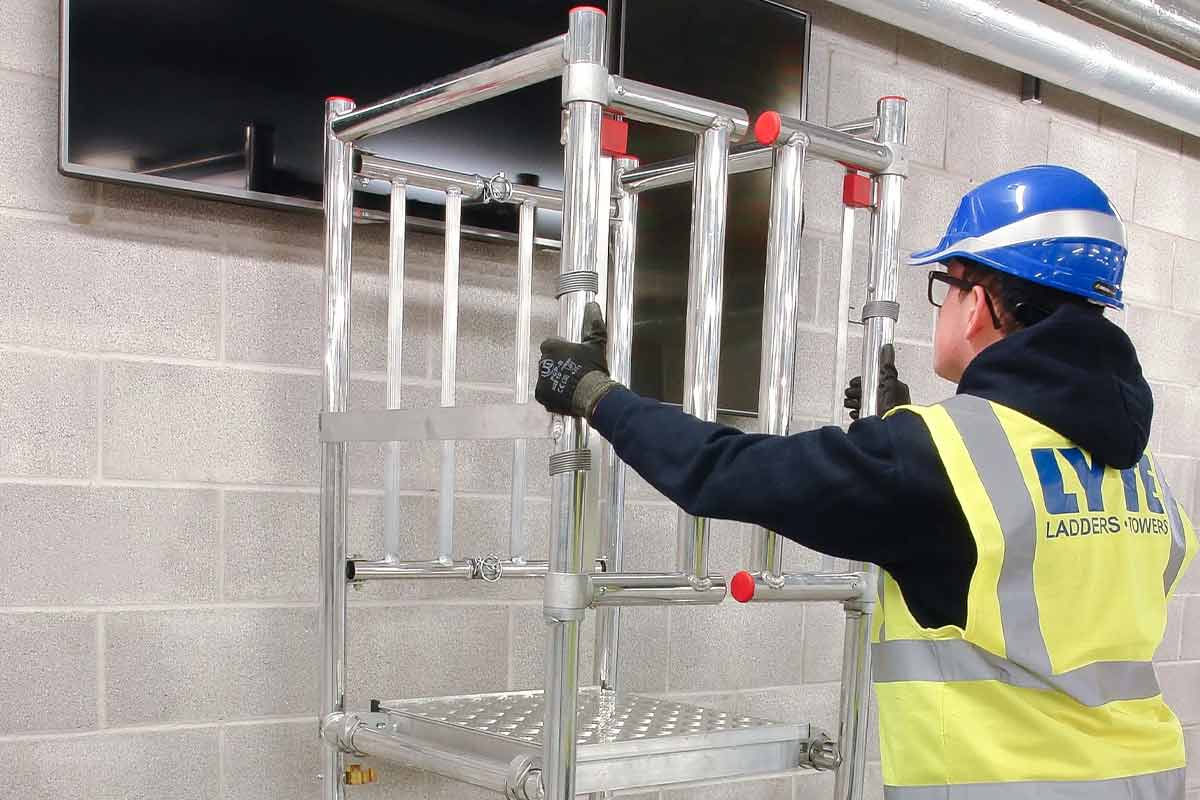
The current recognised standard for a podium step is BS 8620. This standard refers to low-level work platforms that are for single-person use, give side protection, and have a single platform no higher than 2.5m.
What is the Difference Between a Podium and a Step Ladder?
Podium steps and step ladders serve similar purposes but differ in design and application. The biggest visible difference between a podium step and a stepladder is the frame.
Stepladders tend to have a simple hinged frame, whereas podium steps are more similar to scaffolding in their structure, with a four-legged base and an enclosed working platform. This provides a more stable, protected workspace for users than step ladders, allowing workers to use both hands without any significant loss of balance.
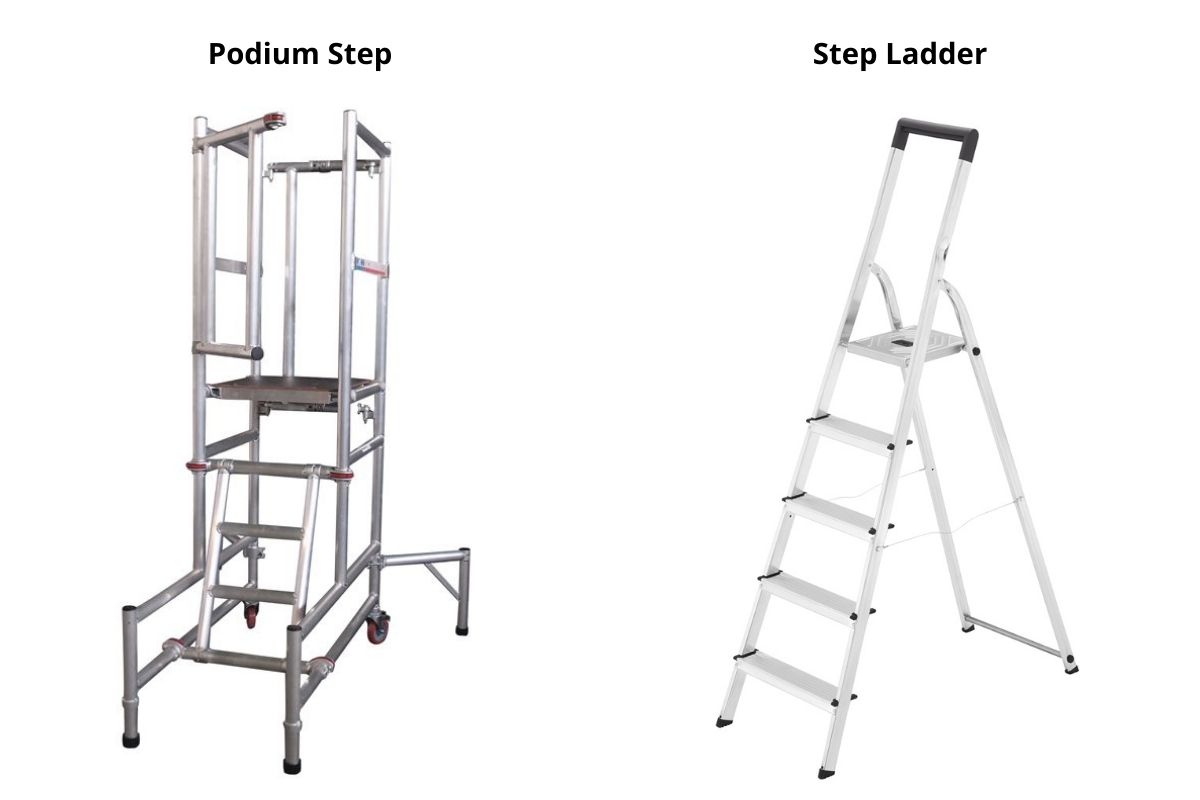
In short, podium steps have a more stable, safety-orientated design than step ladders. However, this is not to say that step ladders don’t serve a purpose. For short-term or quick-access jobs, a step ladder will often be a better choice than a podium step.
| Feature | Podium Steps | Step Ladders |
|---|---|---|
| Frame and Platform | Reinforced frame with a guarded platform, | Narrow rungs without a large platform. |
| Safety Features | Guardrails, anti-slip treads, and lockable feet or wheels. | Basic safety features, without a guardrail. |
| Stability | Broad base and lockable or anti-slip wheels/feet. | Less stable, with a narrow base. |
| Portability | Harder to transport, though might include wheels for easier movement and foldable features for storage. | Lightweight and easier to carry and store between tasks/jobs. |
| Typical Environments | Warehouses, construction sites, maintenance work. | Domestic use or light maintenance. |
| Uses | Best for prolonged or stationary tasks. | Suitable for quick or temporary tasks. |
Can Podium Steps Topple Over?
Podium steps should not topple over due to their self-supporting frame and locking castors and stabilisers (outriggers). However, improper use or placement can cause this to happen. As with all access equipment, you should take the following precautions to prevent accidents:
- Check the workstation safety checklist, following the instructions in the User Guide and the labels on the podium.
- Avoid using the podium in adverse weather conditions, such as strong winds or heavy rain.
- Always place the steps on a flat and stable surface.
- Always try to position the front of the podium towards the work.
- Wear appropriate protective equipment and workwear, including footwear with a flat and firm sole and good grip.
- Do not exceed the manufacturer’s maximum load.
- Avoid leaning too far out from the platform. If required, reposition the steps instead of overreaching, as this can otherwise cause the podium steps to topple.
- Conduct regular inspections to identify potential wear and tear and verify that the equipment remains in good working condition over time.
- Purchase podium steps that are made to the current specifications. The current regulations for low-level podiums are BS 8620, which surpassed PAS 250 in recent years.
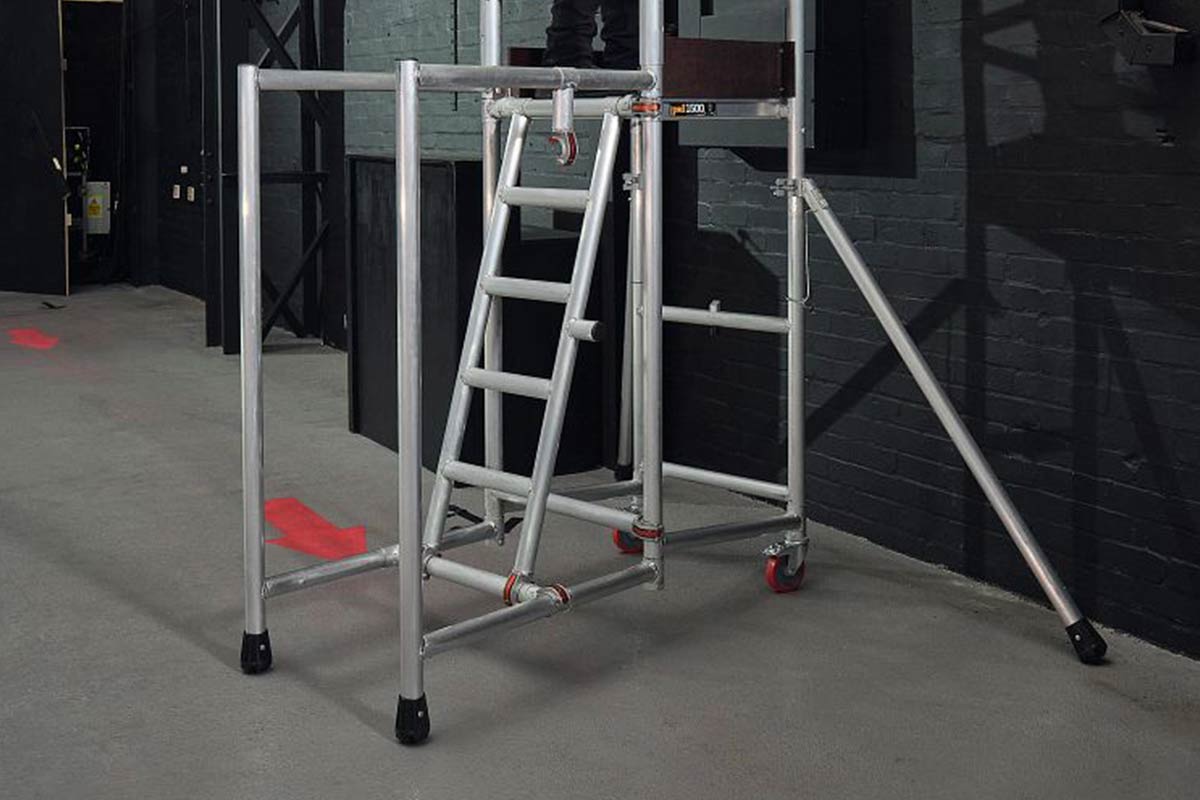
How Often Should Podium Steps Be Inspected?
According to the UK Health and Safety Executive (HSE) guidelines, podium steps should be inspected:
- Before Each Use: A quick check for visible damage, wear, or defects.
- Regularly: Routine inspections should be scheduled weekly or monthly, depending on frequency of use.
- After Incidents: If the steps are dropped or involved in an accident, they should be inspected before further use.
Inspections should focus on checking the guardrails, hinges and locking mechanisms. As per HSE guidelines, you should also look out for:
- damaged or worn ladder feet
- twisted, bent or dented stiles
- cracked, worn, bent or loose rungs
- missing or damaged tie rods
- cracked or damaged welded joints, loose rivets or damaged stays.
Do Podium Steps Require a PASMA?
Anyone employed to be working at height is required by the Work at Height Regulations to be competent in the use of the appropriate equipment and to be able to demonstrate their competence.
If you plan to install, remove, adapt, or move a podium, a PASMA training course is required. However, a training course is advisable but not required for anyone who will be only operating from a podium step.
Do Podiums Need Scaff Tags?
If you need to control the inspection and maintenance of podiums, you need to display the latest inspections, maintenance and identification to your workers using ladder tags.
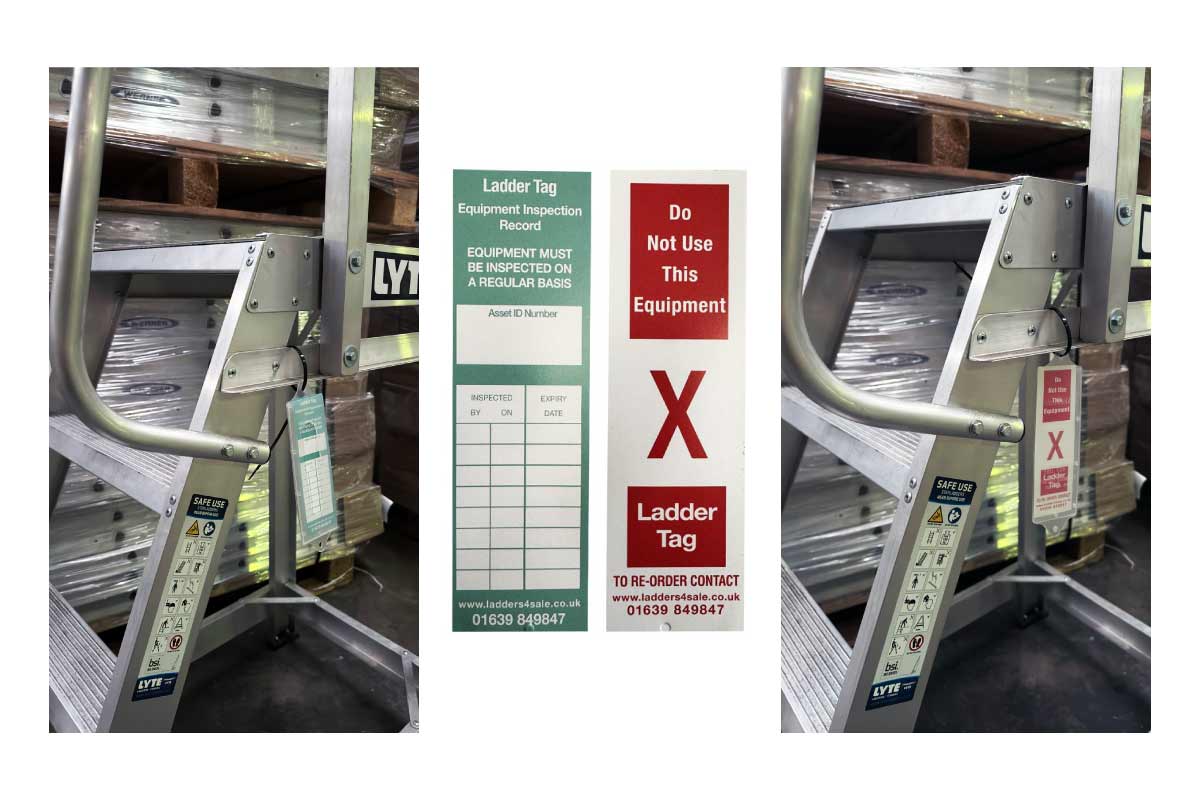
If you require additional advice or have a question for our team on podium steps, don’t hesitate to get in contact with us using this form or via phone at 01639 849847.
Looking for a reliable ladder or other premium access equipment? At Ladders4Sale, we offer a range of ladders, platforms, steps, towers and accessories for all trade and do-it-yourself jobs at unbeatable low prices. Better yet, all of our products come with lifetime support – after your initial purchase, we continue to provide ongoing support and assistance for free. In addition to this, all orders come with free shipping to mainland UK.
Be the first to know the latest industry news and offers
